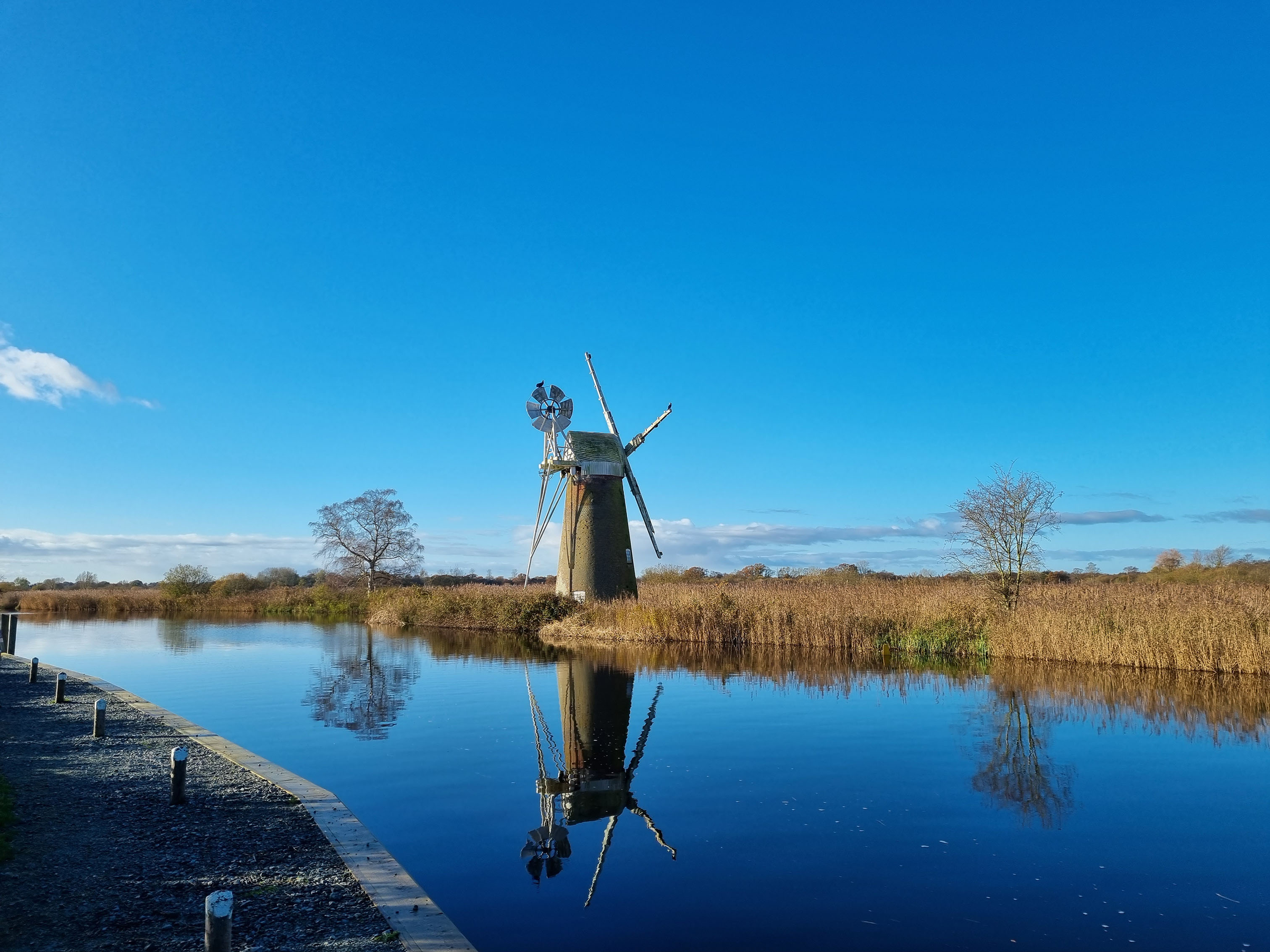Grant for Turf Fen Mill in Norfolk
Historic England has awarded a grant of £242,870 to fund repairs to save the Grade II* listed Turf Fen Mill in Irstead, North Norfolk.
History
Turf Fen Mill was built around 1880 by millwright William Rust to drain the surrounding marshland into the River Ant and make the fields on the west bank suitable for grazing livestock.
Standing at 31 feet high, with a brick tower and a wooden main shaft, it is topped by a boat-shaped weatherboarded cap. The mill was constructed with 4 double-shuttered sails and a choice of high or low gears.
The mill fell out of use in the 1920s. Today, it is in poor condition and at risk of further deterioration. The ground floor regularly floods, the cap and stocks need attention, there are currently no sails, and it can only be accessed by the river. It was added to Historic England’s Heritage at Risk Register in 2023.
Planned repairs
Owned by Norfolk County Council, Turf Fen Mill is a popular landmark and 1 of 3 drainage mills on the How Hill estate, home of the How Hill Trust, a renowned environmental study centre for the Norfolk and Suffolk Broads.
It is planned that repairs to the mill will be completed by 2026. The repair project will further develop the skills of young millwrights who have benefitted from training under the Broads Authority’s recent mills training programme, part-funded by the National Lottery Heritage Fund.
Norfolk County Council is also working with the Norfolk Windmills Trust and the Broads Authority, with the support of the How Hill Trust, to develop skills training, outreach activities and historic interpretation around the 3 remaining mills in the area.
The Turf Fen Mill is a familiar landmark on the Norfolk Broads and an important part of the local landscape story. This exciting partnership project with Norfolk County Council, Norfolk Windmills Trust and the Broads Authority will repair and protect the building for years to come, enable better access to the site and tell the story of how such mills shaped the local landscape.





